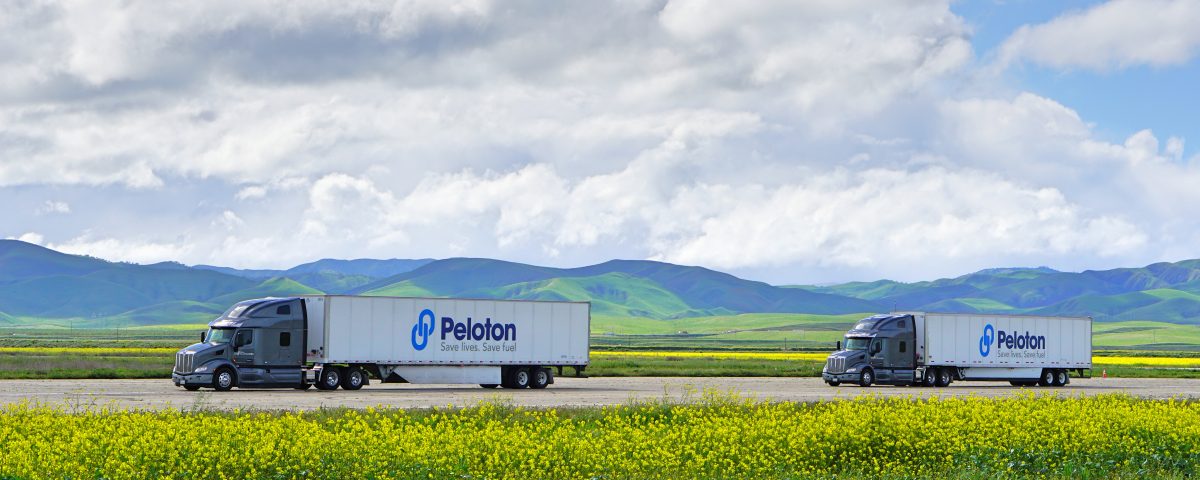
How We Got Here: Laying the Groundwork for the Future of Trucking
August 16, 2019
Our PlatoonPro Retrofit Kit Will Help Installers Get the Job Done
May 8, 2020Why IP Protection is a Key Driver for Peloton’s Platooning Technology


At first glance, the quiet, legalistic, and paperwork-based activities of protecting intellectual property (IP) couldn’t be more different from the big, physical, loud activities of driving trucks. But when it comes to Peloton and its platooning and automated following technologies, IP protection plays a crucial role.
Over the years, we have found that making platooning safe and effective is difficult and requires specific functionalities we have developed. A strong IP foundation provides a way to better position ourselves to serve all OEMs and fleets, as well as provide protection for us, our investors, and our customers. We have crafted our IP portfolio to cover a number of angles and protect key pieces of platooning and non-platooning scenarios including how we communicate between two vehicles, create platoons, connect to the cloud, and maintain control over active platoons. This kind of portfolio gives us an edge on competitors–it is difficult to safely and effectively platoon without utilizing our protected technologies–and gives us credibility with OEMs, partners, and fleets.
When you dig into it, IP encompasses patents, considered “hard” IP, and the “soft” IP including trademarks, copyrights, and trade secrets. As Peloton’s IP attorney, it’s my job to make sure that Peloton can optimize the benefits of its inventions and use them to gain a competitive edge in the marketplace.
The main way I provide Peloton with that competitive edge is by building a high-quality patent portfolio that defines and protects the innovations underpinning Peloton’s platooning and automated following technologies.
Sounds pretty straightforward, right? In fact, building a robust patent portfolio is a complex, multilayered process.
Building a Patent Portfolio
Let’s start with some basics. What is a patent? According to the United States Patent and Trademark Office (USPTO): “A patent for an invention is the grant of a property right to the inventor, issued by the United States Patent and Trademark Office…. The right conferred by the patent grant is… ‘the right to exclude others from making, using, offering for sale, or selling’ the invention in the United States or ‘importing’ the invention into the United States.” In other words, in exchange for disclosing your invention to the federal government, you are granted a limited monopoly on that invention.
A patent contains a specification and drawings — anywhere from ten to 100 pages — describing and illustrating what the invention does and how it works. A patent also includes claims specifying what the patent protects. Claims essentially put a descriptive fence around the invention that the patent applicant then owns. They are where the real action and juice of the patent lies. As IP attorneys commonly repeat: The name of the game is in the claim.
The claims are what a patent owner enforces in the case of an alleged infringement of the patent. Patent owners can also negotiate licenses for their legally protected technology, which are largely based on the scope of the claims.
As soon as a patent application is submitted to the USPTO, it is known as a “pending” patent application. If the USPTO allows a patent application’s claims — a process that can take years, though it can be fast-tracked and completed in about 12 months with a $2,000 fee — a patent is granted to the inventor.
Peloton is serious about patents and IP protection. We have about twenty granted patents in our current portfolio and more than fifty patent applications that are pending at the USPTO. All of Peloton’s patents cover details for how our platooning and automated following systems work and how we make our technologies safe and effective.
Creating a Culture for IP Protection
Because the truck automation market is still very young, and because Peloton is one of the pioneers of the market, there’s a fair amount of “white space” in which Peloton can build a strong patent portfolio.
When I joined Peloton over a year ago, I created an internal process to generate as many high-quality patents as possible. This process includes:
· Training. I train Peloton engineers on how the US IP regime operates, how to recognize patentable subject matter, and how Peloton’s patent system works.
· Completing an invention disclosure form. Engineers and other Peloton employees submit an invention disclosure form with details about what the invention is, why it is novel, the problems with current ways of doing what the invention achieves, and ways to work around any known alternatives that might be implemented by a competitor to skirt Peloton’s IP.
· Review by a patent committee. A panel of technology experts and business people from Peloton, able to distinguish what is and is not a new invention in the platooning field, evaluate each invention disclosure form.
· Encouraging the ‘harvesting’ of inventions. In group brainstorming sessions or informally and ad hoc, people at the company are encouraged to generate any new ideas for novel uses of existing technologies. Many large technology companies use this approach to come up with new patents.
· Leveraging the testing process. Peloton does lots of testing of its platooning and automated following technologies. Inevitably with new technologies, things go awry during testing — and Peloton must fix anything that goes wrong. How a particular problem is fixed can become the basis for new patents. After all, if Peloton notices an issue that can be fixed in a particular way, it’s likely that other companies will eventually run into the same issue. If Peloton holds the patent for the problem’s fix, we can generate income by licensing that patent to our competitors.
My job as Peloton’s IP attorney includes prioritizing the ideas that might lead to patents, writing the majority of the company’s patent applications and their accompanying claims, and shepherding patent applications through the USPTO’s processes.
Peloton is an exciting company, and this is an exciting time for an IP attorney. When it comes to platooning and automated following, we believe we are far ahead of the game when it comes to IP–and we intend to keep protecting our technologies and building a robust patent portfolio that really helps drive the company to great success.



